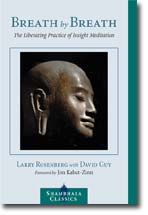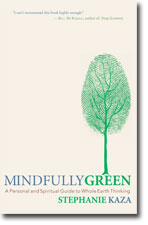Another
distraction that might arise is feelings of impatience, restlessness, or
boredom. Typically, this happens when the mind projects itself into the future
or tries to make this practice into something other than this simple looking at
the breath. You can acknowledge these feelings, without buying into their
stories. They are concepts and hold no necessary power other than the power we invest in them. In response to impatience, restlessness, and boredom, and to take their power away, you can give
yourself permission to be with the breath, and return to the present without
needing to make this moment anything more than it actually it is. You can investigate whatever arises during practice with interest and gentle curiosity.

Come
back to this moment as it unfolds. You are learning about your mind and how it
works, the sensations, thoughts, feelings, and images that emerge, and how
there is a tendency to move away from the present moment. In response, try to
give yourself permission not to get frustrated or discouraged. Frustration or berating yourself for not being concentrated is just another story to come back from. Keep coming back
to the feelings of the breath. That’s the practice. And if you can do this in a matter of fact way, you’ll be moving into mindfulness. The goal here is to practice, to sit with yourself rather than produce a certain “outcome.” It’s the process that’s important and not the destination. There is no destination; it’s a journey to become intimate with your lived experience in this moment and then the next.
Remember
that awareness of breathing can happen at any time, not just when you sit down
to meditate. Throughout the day, many times a day, you can try to remember
yourself in this way. You can touch the breath, bringing awareness to a few
cycles of the breath as you are hurrying through the day or coping with
something stressful. You can bring yourself into the now by giving your
attention to the breath. Try a 3-minute breathing space exercise by doing a mini-practice session. Come back to the formal practice described above on a regular basis as a
way to strengthen your awareness and your ability to remember to be mindful
throughout the rest of your experience.
When Siddhartha Gautama sat under the pipal tree working towards awakening he was doing breathing meditation. He kept bringing his attention back to his body and the experience of now. He vowed not to get up until he was fully awakened and became buddho
For more information and audio sample, visit my website Exquisite Mind. (“awake”). This process is explained in the Satipatthana Sutta or the “Discourse on the Awakening of Mindfulness” A beautiufl explanation of this sutta can be found in Larry Rosenberg’s Shambhala Classic: Breath By Breath: The Liberating Process of Insight Meditation.
(“awake”). This process is explained in the Satipatthana Sutta or the “Discourse on the Awakening of Mindfulness” A beautiufl explanation of this sutta can be found in Larry Rosenberg’s Shambhala Classic: Breath By Breath: The Liberating Process of Insight Meditation.

